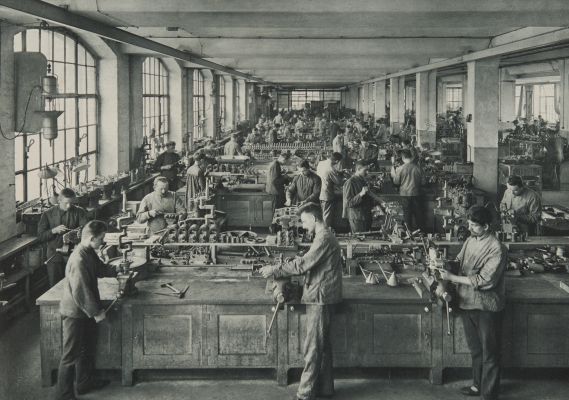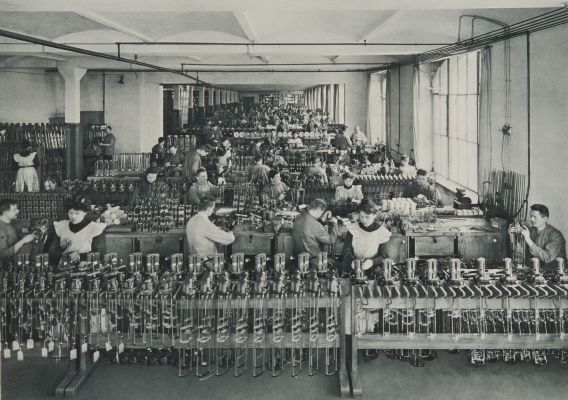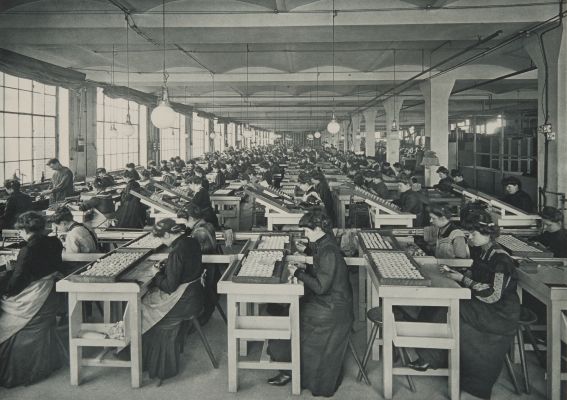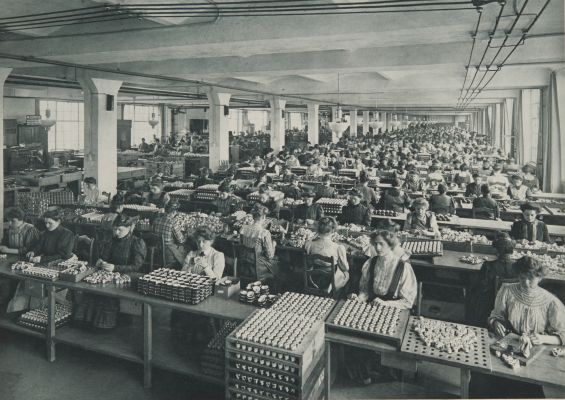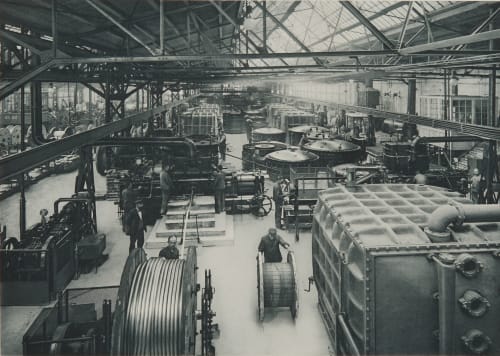
Title
KabelwerkArtist
UnknownPublication
Allgemeine Elektricitäts-Gesellschaft: AEG 1883 - 1908Date
1908Process
PhotogravureAtelier
Georg Büxenstein & Co.Image Size
23.7 x 17 cmSheet Size
37 x 32 cm
Engineer Emil Rathenau founded AEG as the Deutsche Edison Gesellschaft für angewandte Elektrizitäts (DEG) two years after seeing Edison’s lighting at the Paris Exposition Internationale de l’Electricité in 1881. The company was renamed the Allgemeine Elektrizitäts Gesellschaft (General Electric Company) in 1887. It quickly expanded its operations from the production of light bulbs to the production of electric motors, domestic appliances, transformers, and other electrical equipment and the construction of power plants both at home and abroad.
By the early years of the twentieth century, the business had expanded into many areas of industrial development and transportation, making it a highly recognizable company. The firm also put a high value on architecture, employing renowned architects and designers as a critical component of its corporate identity. Otto Eckmann, for example, was responsible for several promotional and typographic designs, including the company’s appearance at the Paris 1900 Exhibition. The appointment of Peter Behrens as artistic advisor to AEG in 1907, with responsibility for the corporate identity of all aspects of the firm, was perhaps the most important. From commercially popular arc lamps, lights, clocks, kettles, and fans to promotional materials, exhibition pavilions, showrooms, factory buildings (including Berlin’s famous Turbine Hall in 1909), and workers’ housing and furniture, there was something for everyone. Such designs adopted an efficient, contemporary aesthetic symbolizing the modernity of the industry that created them, an outlook that was consistent with the modernizing tendencies of the Deutscher Werkbund which was founded in 1907. https://encyclopedia.design/
This lavish album was created to celebrate the company’s 25th anniversary. The forty full-page photogravures were made by Georg Büxenstein & Co., the atelier responsible for the beautiful photogravures in the German journals Die Kunst in der Photographie and Photographische Mitteilungen. The fact that this no-expense-spared album (the cover of which has an inlaid steel medallion) was produced in photogravure validates its position as the pinnacle of photographic reproduction early in the 19th century.


